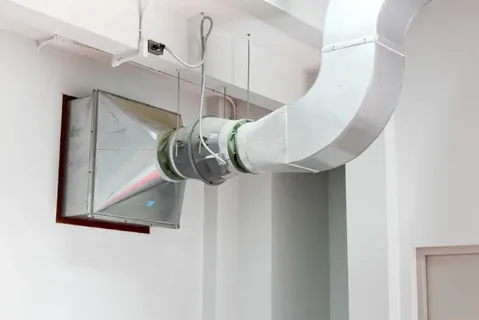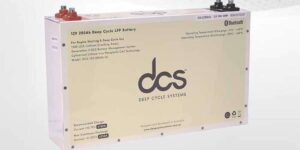In recent years, house ventilation has gained significant attention as homeowners become more conscious of the importance of air quality within their living spaces. Proper ventilation is crucial for maintaining a healthy environment, preventing the accumulation of harmful pollutants, and ensuring the comfort of occupants. This guide explores the various aspects of ventilation systems, emphasizing their importance and providing insights into their different types, components, and benefits.
Importance of Proper Ventilation
Proper ventilation is essential for maintaining optimal air quality and managing indoor humidity levels in any home. When a house lacks sufficient ventilation, pollutants such as carbon dioxide, volatile organic compounds, and allergens can accumulate, posing health risks to inhabitants. Furthermore, inadequate ventilation can exacerbate moisture problems, leading to mold growth and structural damage. These issues highlight the necessity of investing in an effective ventilation system to protect the health and well-being of those residing in the house.
Proper ventilation ensures a continuous supply of fresh air while expelling stale, contaminated air, thus creating a healthier and more comfortable living environment. Controlling humidity also helps prevent condensation, which can damage walls, windows, and insulation. In addition, effective ventilation can help mitigate the impact of indoor activities like cooking, cleaning, and showering, which often release moisture and pollutants into the air. Therefore, an efficient ventilation system is fundamental to preserving the house’s structural integrity and its occupants’ health.
Types of Ventilation Systems
Various ventilation systems are designed to meet specific needs and preferences. Natural ventilation depends on openings such as windows, doors, and vents to promote airflow. This method is cost-effective and environmentally friendly, but external weather conditions can influence its efficiency.
On the other hand, mechanical ventilation systems use fans and ducts to control air movement and maintain consistent airflow. These systems are further categorized into exhaust-only, supply-only, and balanced systems. Exhaust-only systems expel stale air inside the house, typically using fans in high-moisture areas like bathrooms and kitchens. Supply-only systems, in contrast, bring fresh air into the house, often through dedicated ducts and vents.
Balanced ventilation systems are designed to introduce fresh air and expel stale air in equal measures, offering a comprehensive solution for indoor air quality. These systems often include heat recovery ventilators, which transfer heat between outgoing and incoming air to enhance energy efficiency.
Hybrid systems, which combine natural and mechanical ventilation elements, are also available. These systems can switch between natural and mechanical modes depending on the conditions, providing flexibility and control. Each type of ventilation system has its own set of advantages and is selected based on factors such as the house’s layout, local climate, and specific requirements of the occupants.
Components of a Ventilation System
A typical ventilation system comprises several integral components that work in tandem to facilitate efficient air exchange. Fans play a pivotal role by driving air movement throughout the house, ensuring fresh air is brought in and stale air is expelled. Ducts are responsible for guiding the airflow to various parts of the home, maintaining a consistent air distribution. Vents serve as entry and exit points for air in different rooms, helping to balance the indoor environment. Filters are crucial as they capture dust, pollen, and other airborne pollutants, enhancing air quality and protecting the health of the occupants.
Control units enable users to adjust system settings, optimizing ventilation according to specific needs and conditions. Each component is designed to work cohesively, ensuring the ventilation system operates efficiently and effectively. By properly functioning these elements, the system can provide continuous fresh air, contributing to a healthier and more comfortable living space. Regular inspection and maintenance of these components are essential to prevent malfunctions and ensure the ventilation system’s longevity.
Benefits of Effective Ventilation
An effective ventilation system provides numerous advantages that enhance occupants’ health and the living space’s overall quality. Ventilation systems are critical in improving indoor air quality by consistently removing pollutants such as dust, allergens, and volatile organic compounds. This is particularly beneficial for individuals with respiratory conditions such as asthma or allergies, as cleaner air reduces the likelihood of triggering symptoms.
Additionally, proper ventilation aids in regulating indoor temperature and humidity levels, creating a more comfortable environment throughout the year. During colder months, features like heat recovery ventilators can help retain warmth, reducing the need for excessive heating and thereby lowering energy costs. In warmer periods, effective ventilation helps expel hot air, making cooling systems more efficient and conserving energy.
Beyond health and comfort, ventilation systems also contribute to the house’s structural integrity by preventing moisture buildup, which can lead to mold growth and material degradation. By mitigating these risks, a well-maintained ventilation system protects the home’s physical structure and ensures its occupants a pleasant and healthy living environment.
Ventilation in Different House Areas
Different areas within a house have specific ventilation needs based on their function and usage. Kitchens, for instance, generate significant amounts of moisture and odors due to cooking activities, necessitating robust extraction systems to remove these by-products efficiently.
Bathrooms produce high humidity levels from showers and baths, requiring effective ventilation to prevent condensation and mold growth. Basements, often enclosed and less frequented, can suffer from dampness and musty odors if not properly ventilated. Attics that experience fluctuating temperatures need adequate airflow to prevent overheating in summer and moisture accumulation in winter.
Living rooms and bedrooms benefit from balanced ventilation systems that ensure a steady supply of fresh air while expelling stale air. Laundry rooms, where dryers and washing machines operate, also require sufficient ventilation to manage humidity and heat.
By addressing the unique ventilation requirements of each area, homeowners can maintain consistent and healthy air quality throughout the house. Properly ventilating these spaces enhances comfort and safeguards the home’s structural integrity by preventing moisture-related issues.
Choosing the Right Ventilation System
Selecting an appropriate ventilation system is a nuanced process that requires careful consideration of various factors, such as the house’s dimensions, architectural layout, and the local climate. Different ventilation systems offer distinct benefits and limitations, making it crucial to align the choice with the household’s specific needs. Mechanical systems, for example, provide reliable and controlled air movement, which benefits homes in regions with extreme weather conditions. Although eco-friendly and cost-effective, natural ventilation may need to be more dependable in fluctuating climates.
Assessing the house’s air quality issues can also guide the decision. Homes that experience high levels of indoor pollutants or moisture might benefit from more robust mechanical systems, including balanced ventilation systems equipped with heat recovery features. On the other hand, homes with moderate ventilation requirements might find a hybrid system effective, combining natural and mechanical elements.
Energy efficiency and cost are critical considerations as well. While initial installation costs for advanced mechanical systems may be higher, their energy-saving capabilities can offer long-term savings. It is equally important to evaluate the maintenance requirements of the chosen system. Systems with accessible components and user-friendly control units can simplify upkeep, ensuring sustained performance.
Consulting with ventilation professionals can provide valuable insights and tailored recommendations, helping homeowners select a system that best matches their requirements and circumstances.
Installation and Maintenance Tips for House Ventilation Systems
Ensuring house ventilation systems’ correct installation and ongoing maintenance is crucial for their efficacy and longevity. Employing professional installation services guarantees adherence to building standards and optimal system performance. Regular maintenance tasks, such as cleaning or replacing filters, are essential to maintaining good air quality and preventing blockages that could hinder airflow.
Additionally, inspecting fans and ducts for signs of wear or damage helps avert potential system failures. Seasonal checks, particularly before winter and summer, can ensure the system operates efficiently during extreme temperatures. Proper lubrication of moving parts and ensuring control units function correctly can enhance the system’s efficiency. For homes with mechanical ventilation systems, monitoring energy consumption to detect unusual increases that could indicate system inefficiencies is advisable.
Regularly scheduled maintenance not only extends the lifespan of the ventilation system but also ensures that it continues to provide a healthy living environment by consistently removing pollutants and managing indoor humidity levels. Homeowners can maintain a well-functioning and efficient ventilation system by prioritizing routine checks and professional servicing.
Energy Efficiency and Ventilation
Energy efficiency plays a pivotal role in the design and operation of modern house ventilation systems. Innovative features such as heat recovery ventilators (HRVs) and energy recovery ventilators (ERVs) have revolutionized how homes manage air exchange. These systems transfer heat between the outgoing stale air and the incoming fresh air, reducing the need for additional heating or cooling. This conserves energy and translates to significant cost savings on utility bills.
Additionally, well-designed ductwork and strategically placed vents can optimize airflow, ensuring energy is not wasted. Advanced control systems enhance efficiency by allowing precise adjustments based on real-time conditions, ensuring that the ventilation system operates only when necessary. By incorporating these energy-efficient technologies, modern ventilation systems provide a sustainable solution for maintaining indoor air quality while minimizing environmental impact.
The integration of such systems is particularly beneficial in reducing the overall carbon footprint of a household, aligning with broader environmental sustainability goals. Regular maintenance, including checking for leaks and ensuring that components such as fans and filters are clean and functioning correctly, also contributes to the energy efficiency of the ventilation system.
Conclusion
House ventilation is essential for ensuring a healthy and comfortable living environment. Different systems, including natural, mechanical, and hybrid options, cater to varying needs and preferences. Each system comprises fans, ducts, and filters, which work together to facilitate efficient air exchange. Proper ventilation helps to control humidity, remove pollutants, and prevent moisture-related issues like mold growth. Energy-efficient technologies, such as heat recovery ventilators, further enhance the benefits of ventilation systems by reducing energy consumption and costs. Investing in a suitable ventilation system ensures a healthier living space and contributes to long-term energy savings and sustainability.
5 FAQs
Q: What is the best type of ventilation system for a home?
A: The best type of ventilation system depends on several factors, including the design of the home and the local climate. Mechanical systems are often recommended due to their reliable and controlled air movement.
Q: How often should a ventilation system be serviced?
A: To ensure optimal performance, it is advisable to have a professional inspect and service the ventilation system at least once a year.
Q: Can ventilation systems help reduce indoor allergens?
A: Yes, ventilation systems can greatly enhance indoor air quality by filtering out dust, pollen, and other airborne pollutants. This is especially beneficial for those with respiratory issues such as asthma or allergies.
Q: Are there energy-efficient options available for ventilation systems?
A: Modern ventilation systems frequently include energy-efficient features like heat recovery ventilators. These conserve energy by transferring heat between outgoing and incoming air, which can reduce the need for additional heating or cooling and lower utility bills.
Q: What are the maintenance requirements for ventilation systems?
A: Regular maintenance ensures the system’s efficiency and longevity. Tasks such as cleaning or replacing filters and checking for blockages are essential but generally relatively simple.
Q: How can understanding ventilation systems benefit homeowners?
A: By knowing the best type of system, the significance of regular servicing, the systems’ role in reducing allergens, the energy-efficient options available, and the necessary maintenance tasks, homeowners can make more informed decisions regarding their house ventilation systems.
| Related Business Listings |
| Contact Directory |
| Local Business Profiles |




